Help Find A Long-Lost Silent Film, “Sentimental Tommy”
By Michael Perlman
Forest Hills and Rego Park have made the cut for films, television series, and plays, and achieved an impressive record on camera since its founding in the early twentieth century. Rewinding to what is likely one of our neighborhood’s earliest moments on camera, transpired in 1920.
That year, the rural steep hills along 66th Road (formerly Sample Street) between 102nd Street and 110th Street (formerly Colonial Avenue) grasped the attention of the landmarked Kaufman Astoria Studios (originally Astoria Studios), which erected a set depicting Thrums, a Scottish village for “Sentimental Tommy.” This nearly 80-minute acclaimed silent film was a drama, which was released on May 29, 1921, and screened in theaters including Brooklyn’s DeKalb Theatre and the Merrick Theatre, known as “Long Island’s Finest Theatre.”
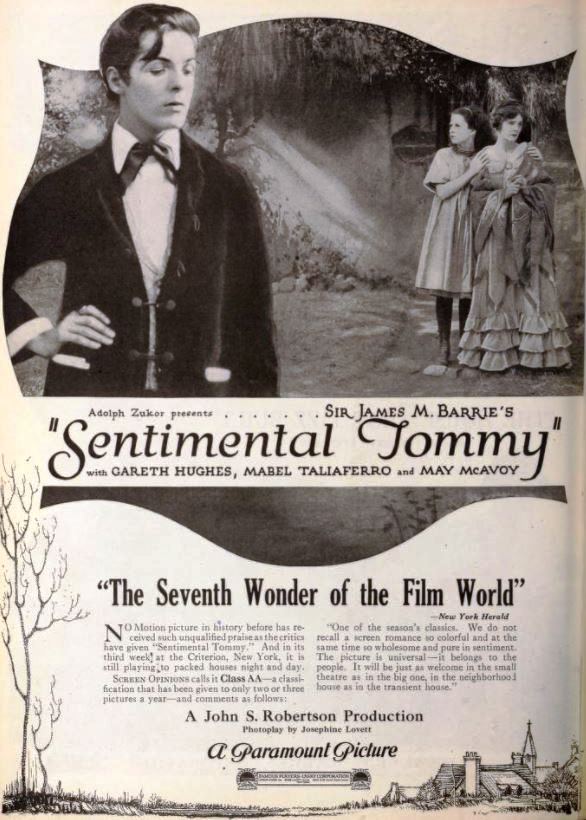
1921 ad
Residents of the village of Thrums ostracized Grizel and her mother, who was named “The Painted Lady.” Scottish-born Tommy Sandys was a needy boy with a rich imagination, who proves to Grizel that he loves her for who she is, and not on the basis of pity.
In the fall of 1919, the same Forest Hills spot accommodated a replica of a Civil War era American village for Augustus Thomas’ play, “The Copperhead.” Brooklyn architect Robert M. Haas of 101 Union Street, who served as Chair of the art and decoration department of the Famous Players-Lasky Corporation, designed both sets. This same forested hill, where children would tend to their sleds, was nicknamed “The Green Jungle.” In the mid-1960s, Birchwood Towers replaced a destination that was a trace of Forest Hills’ farming days.
The Silent Film Era spans 1894 to 1931. Today, “Sentimental Tommy,” a significant film of the era, is believed to be lost. Either it is concealed in a dusty archive and forgotten about, or may be a complete loss as a result of the unstable nitrate film base that was typically used. Currently, stills of the film survive. Approximately 75 percent of silent films have been lost, according to the Library of Congress. That would account for an estimated 2,749 that exist in a complete form out of an estimated 10,919 American silent films. There is hope, since some silent films that were believed to be lost forever, were rediscovered. Such is the case for the 1915 film “The Heart of Lincoln” starring Francis Ford, which was classified as missing for over a century, but rediscovered this year by intern Dan Martin, who browsed boxes at the Historic Films Archive in Greenport, NY.
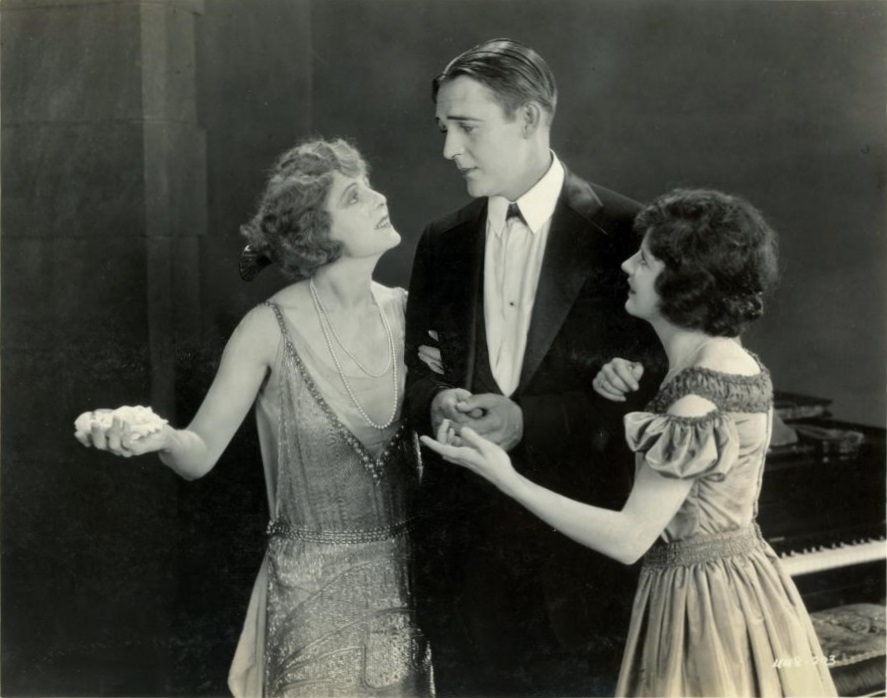
Sentimental Tommy still
“If a list were made of the best photoplays ever made, the (director) John S. Robertson production for Paramount of Sir James M. Barrie’s (renowned book) ‘Sentimental Tommy’ would undoubtedly be included,” read a 1921 edition of the Mount Vernon-based publication, The Daily Argus. “When this picture was shown yesterday at the Playhouse, there was not a sound to be heard, and at the close the audience broke into sincere applause.” It also references that Mr. Robertson, who would be remembered for his work, “Dr. Jekyll and Mr. Hyde” a year prior, produced “Sentimental Tommy” faithfully in respect for the author’s delightful touches. Gareth Hughes, who appeared as Tommy Sandys, was compared to a genuine “flesh and blood Barrie-esque character.” Actress May McAvoy, who appeared as the devoted and pitiful Grizel, was referenced as a great example for her emotional work. The cast of excellence included other major names, such as Mabel Taliaferro who portrayed Grizel’s mother, “The Painted Lady,” and George Fawcett, Harry Coleman, Leila Frost, Kempton Greene, Virginia Valli, Kate Davenport, and Alfred Kappeler.
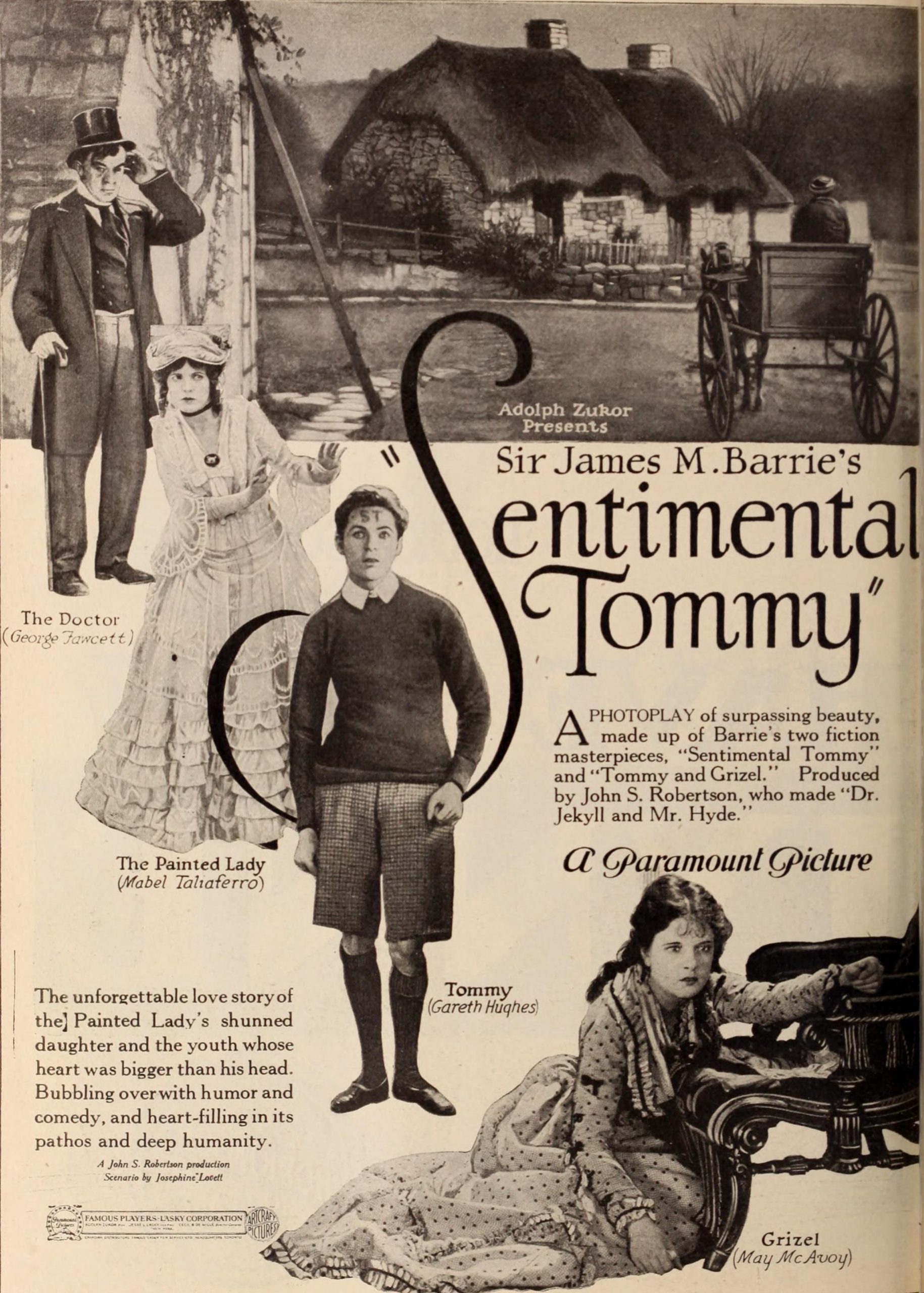
Sentimental Tommy ad Exhibitors Herald March 19, 1921
An April 19, 1921 edition of The Brooklyn Standard Union featured a review of the silent film, which was subject to an extended engagement at Manhattan’s Criterion Theatre in Times Square. It read, “Seldom has a photoplay which relied upon whimsy and refinement been developed with such delicacy and naive romance as ‘Sentimental Tommy.’ With rare artistry, the director, players, and scenarists, have kept the Barrie spell in all its lightness, thus making the story more gripping and realistic. The imagination is stirred, and the emotions are played upon with deft nuances, while the eye is intrigued through the charming and almost toy-like settings. Lovers of good literature are turning to the Criterion to see ‘Sentimental Tommy’ as they rarely turn to a photoplay.”
“An Architect in the Movies” was a headline of The Brooklyn Daily Eagle on October 17, 1920. In the spotlight was Robert M. Haas, who designed a faithful reproduction of the Scottish village. After Haas’ training at the Newark Technical School, Ohio Northern University, and University of Pennsylvania, he practiced with a firm consisting of architects. Among the achievements were the Presidential Palace of Cuba interior, and countrywide estates including Lillian B. Ryan’s in Bryn Mawr, Pennsylvania.
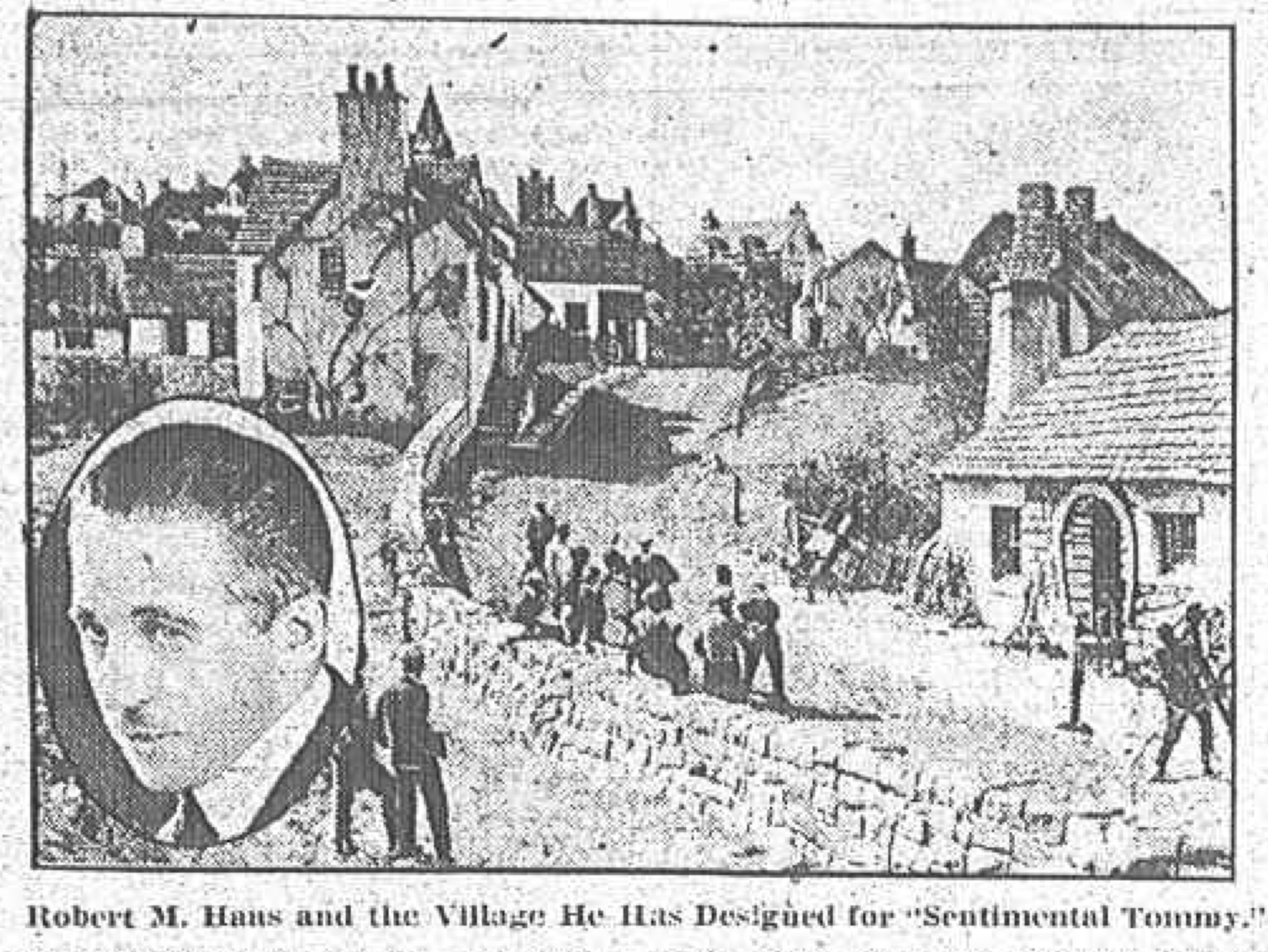
Sentimental Tommy set by architect Robert M Haas, insert, Brooklyn Daily Eagle, 1920
An excerpt read, “After he had completed the Allen place, Mr. Haas had a call from Mr. Allen one day, saying that he was leaving for Europe, and that he had a request from some motion picture people to take some exteriors on the estate. Would Mr. Haas take care of them? He would and did by calling around at the Famous Players’ studio to talk things over. The general manager showed him around the studio and asked him what he thought of some of the sets. From the architectural point of view, he didn’t think much of them, and told him so.” Haas responded to a request for producing improved sets, and abandoned his architectural work to develop a specialized field.
As the head of the art and decoration department of the Famous Players-Lasky Corporation, Haas conducted the business in the manner of a large architect’s office, with directors as his clients, and script was reviewed with him. “Each scene is considered in detail as to the style of architecture, the nationality of the setting, and the character of the actor. For the larger scenes, such as the building of entire villages, fantastic or elaborate sets, models are constructed to scale and arranged and rearranged until satisfactory. The settings are built by carpenters from blueprints developed from the rough sketches made in conference,” the publication continued.
The village of Thrums’ reproduction for “Sentimental Tommy” in 1920 in Forest Hills was highly regarded by experts on Scottish architecture and landscapes. The praise continued in 1921 with the reproduction of Thrums in the shadow of California hills for Barrie’s “The Little Minister.” “Nannie’s home, the manse, the town hall, and the auld licht kirk fairly breathe the air of Scotland,” read The Sunday Star of Washington D.C. on December 5, 1921.
Scottish novelist & playwright, Sir James Matthew Barrie (1860 – 1937) was born in Kirriemuir, Angus, Scotland and later relocated to 100 Bayswater Road in London, a home where he achieved many successes in the literary and theatrical world. One of his great creations was Peter Pan. His novel, “Sentimental Tommy,” was published initially in 1896, and another edition was available in 1920; both copyrighted through the notable Charles Scribner’s Sons of New York. The film is also based on J.M. Barrie’s novel, “Tommy and Grizel.”
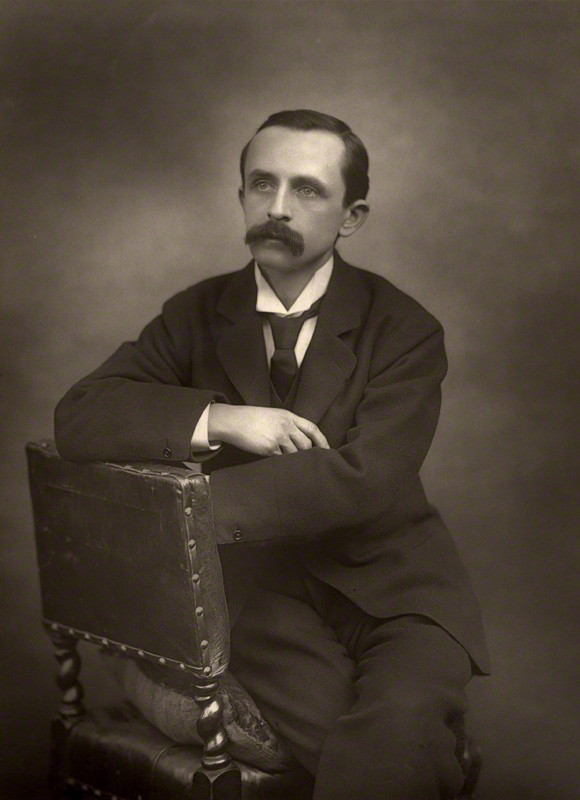
Novelist Playwright James Matthew Barrie in 1892 Photo by Herbert Rose Barraud
For leads on locating the long-lost silent film masterpiece and to volunteer, email mperlman@queensledger.com


